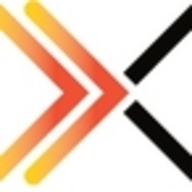

Teradata and Verix Limelight compete in data management and analytics solutions. Teradata has an edge in scalability and advanced analytics, making it ideal for enterprises, while Verix Limelight excels in user-friendliness and quick insights.
Features: Teradata offers large-scale data warehousing, supports diverse data formats, and robust integration capabilities. Verix Limelight provides simplified analytics, prioritizes usability, and focuses on dashboard visualization.
Room for Improvement: Teradata could enhance user-friendliness, ease of deployment, and simplify setup processes. Verix Limelight can improve in handling complex data, offering advanced analytics, and increasing customization options.
Ease of Deployment and Customer Service: Teradata's deployment is intricate, requiring expertise, but customer service is responsive and helpful. Verix Limelight offers straightforward deployment and efficient customer service, appealing to businesses seeking quick setup.
Pricing and ROI: Teradata's costs are higher due to its extensive features, promising ROI for large implementations. Verix Limelight has competitive pricing, focusing on quick ROI with user-friendly analytics solutions.

Teradata is a scalable data analytics platform designed to meet enterprise demands for large-scale data management and processing, focusing on performance, scalability, and security for complex query executions.
As a leading data warehousing solution, Teradata integrates advanced analytics enabling organizations to derive insights from massive datasets. It supports high-volume data workloads with its architecture optimized for analytical queries. Users benefit from its robust scalability, allowing seamless expansion as data grows. Teradata's SQL engine is compatible with a wide range of data types, ensuring flexibility in data analysis. With advanced security measures, it protects sensitive data across various environments, providing peace of mind to users handling critical information.
What are the most important features of Teradata?Teradata is widely used in industries like finance, telecommunications, and healthcare, where data-driven decisions are critical. Companies leverage its robust analytics capabilities to enhance customer experiences, streamline operations, and ensure compliance with regulatory requirements. In these sectors, quick access to data insights can significantly impact competitive advantage.
Verix Limelight harnesses the power of data science and advanced analytics to drive performance across commercial organization’s business processes. Through analysis of a wide variety of data with embedded business logic, Limelight powers your business decisions in a continuous and consistent manner.
Verix Limelight offers pre-packaged use cases for life sciences commercial operations – sales, managed access and marketing professionals, to automate and optimize day to day processes. Limelight’s use cases are implemented on top of Verix’s robust Data Intelligence Foundation, a ML enabled commercial DataMart that holds hundreds of historical, factual, and predictive attributes about every HCP/account in your therapeutic universe.
We monitor all BI (Business Intelligence) Tools reviews to prevent fraudulent reviews and keep review quality high. We do not post reviews by company employees or direct competitors. We validate each review for authenticity via cross-reference with LinkedIn, and personal follow-up with the reviewer when necessary.